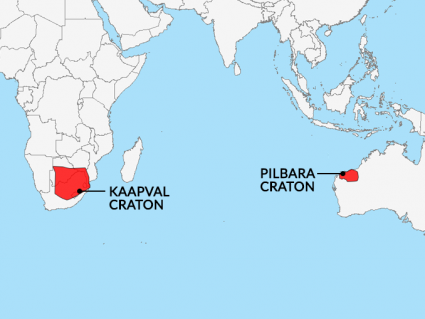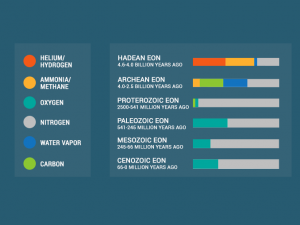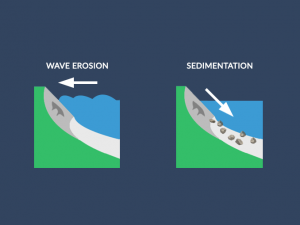3 Types of Faults: Normal, Reverse and Strike-Slip

Normal, Reverse and Strike-Slip Faults
Faults are an important part of geology and can be categorized in various ways. This blog post offers a brief introduction to the most common type of fault.
The 3 types of faults are:
- Normal faults
- Reverse faults
- Strike-slip faults
In this blog post, we will learn about these three types of faults and how they are formed.
An intuition for the 3 types of faults
Think of faults like taking a thick mat and snapping it:
- If it splits with an incline, it’s a dip-slip type of fault
- If it doesn’t have an incline, it’s strike-slip
Now, you have 2 mats. Put them on water so they float against each other. Here’s what could happen with their relative movements:
- Fault = Fracture in two mats with relative movement
- Dip-slip = Incline split with vertical movement (upwards or downwards)
- Strike-slip = Straight split with horizontal movement (right or left lateral)
- Lithosphere = Floating mat
- Asthenosphere = Water
1. Normal Fault
A normal fault is a geological fault where the hanging wall has moved downward relative to the footwall due to extensional forces, typically associated with divergent plate boundaries.
Normal faults can be observed in various geological settings, such as rift zones and areas undergoing tectonic stretching.
2. Reverse/thrust Fault
A reverse/thrust fault is a geological fault where the hanging wall has moved upward relative to the footwall due to compressional forces, often associated with convergent plate boundaries.
This type of fault can result in significant geological features and can also generate powerful seismic events.
3. Strike-slip fault
A strike-slip fault is a geological fault where the movement of tectonic plates occurs predominantly horizontally, parallel to the fault plane, in opposite directions, typically due to horizontal shearing forces.
These faults are commonly found along transform plate boundaries, such as the San Andreas Fault in California.
What is the speed of fault movement?
At faults, there is an enormous amount of friction between plates. Like a stretched spring, it stores tremendous potential energy near the fault.
- CREEP: If movement is slow at the fault, it’s called “creep”. By definition, “creep” means the fault is always absent of sudden movements that could create an earthquake.
- EARTHQUAKE: But if the two plates have a sudden jerky movement, this generates enough force to produce an “earthquake”. At this point, elastic waves shoot outwards which is the force one would feel from an earthquake.
Creep is the slow, continuous, and aseismic movement of rocks or soil along a fault, while an earthquake is the sudden and violent shaking of the Earth’s surface caused by the release of accumulated stress along a fault, resulting in seismic waves.
Where do faults occur?
All plate tectonic boundaries are faults because they always have movement relative to each other. By definition, plate tectonics always converge, diverge, or slide across each other.
- NORMAL: Normal faults occur at divergent plate boundaries.
- REVERSE: Reverse faults are at convergent plates.
- STRIKE-SLIP: Strike-slip faults occur at transform plate boundaries.
But faults can occur within plates as fractures as well. For example, the New Madrid Fault is a massive fracture in Missouri. Over time, this fault has caused the Mississippi River to run a different course.
Reverse (thrust) faults are common in areas of compression. For example, reverse thrusts exist in areas with subducting plates such as along the coast of Japan.
Types of Faults: Normal, Reverse and Strike-Slip
There are three types of faults that may occur in a rock. These faults have distinct characteristics and movements.
Now, you know the 3 types of faults are:
- Normal fault
- Reverse fault
- Strike-slip fault
Normal faults occur when two plates, one on top of the other, slide past each other and create the fault. Reverse faults occur when one plate slides under the other, creating a vertical offset. Strike-slip faults happen when two plates move horizontally past each other.
Some consider a 4th type of fault:
- Oblique slip fault
Oblique slips are a combination of any of these 3 types of faults.
If you have any questions or comments about the types of faults, please use the comment form below to let us know what’s on your mind.


















Can a convergent boundary cause a tsunami in the ocean?
What do specific types of faults create (give examples & name specific landforms)?
Normal faults occur when two plates, one on top of the other, slide past each other and create the fault. Where does this occur today? What are the names of the 2 plates?
I want to know which features are formed to normal fault and reverse fault
Give me the differences and similarities of different types of faults
Please suggest to me how to deal with reverse fault and how to mine those places.
I need more differences between the transform fault and strike-slip fault.
Shortly after the Landers earthquake of 1992 I stumbled on to an online video showing an aerial/orbital perspective of the fault rupture running across the Mojave Desert floor. When zooming in on the image the fault slippage was clearly displayed over a few seconds. Additionally, two circular “bearings” of a few hundred feet in diameter on one side of the fault, opposing a single “bearing” on the opposite side of the fault, are configured consistent with the function of “bearings”. I estimated the size of the “bearings” based on the size of the greasewood bushes on desert surface including on the “bearings” in the video. The direction of “bearings'” rotation was consistent with being rotated by the rupture.
I have been unable to locate this video.
Do you know of existence of this video?
Thank you,
George
Could you give the definition for Normal/Reverse/Strike-Slip faults
Thank you 🙂
Can you describe a normal fault, reverse fault, and strike-slip fault?